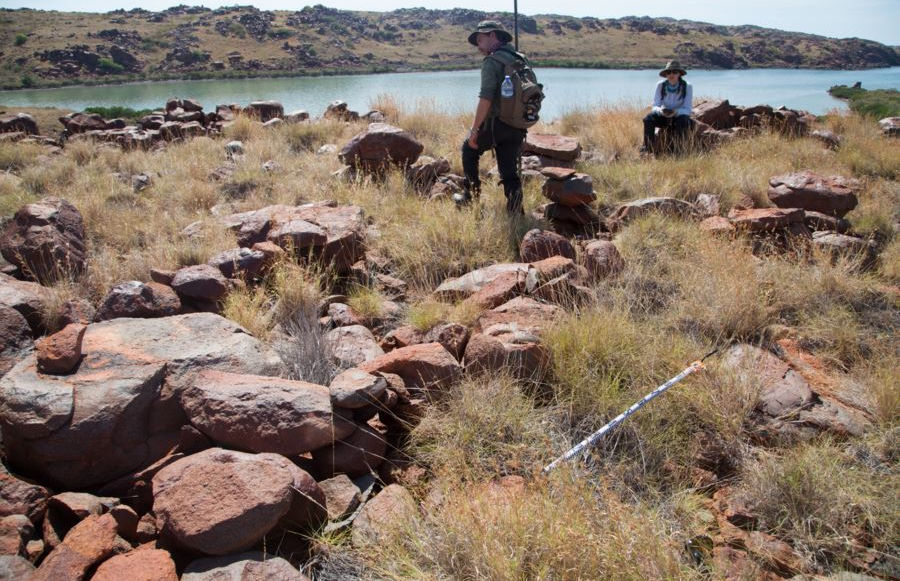

Al Paterson, Ken Mulvaney, Emma Beckett, Jo McDonald
“Flying Foam Passage was a major pearling area from the late 1860s. Black Hawke Bay contains more relics and remains of structures than any other known pearling site in the Dampier Archipelago.” McIlroy 1979. Our fieldwork focused on this hub of 19th-early 20th Century pearling, and we describe the Aboriginal cultural heritage features located around the margins of this bay.
Black Hawke Bay is a small inlet on Gidley Island further north along Flying Foam Passage from the Dolphin Island study site (chapter 12). The evidence here suggests the place as used by pearlers until the late 1890s.
Some material indicates the presence of Asian workers, but there is little material evidence for Aboriginal people being part of this colonial era occupation despite being workers elsewhere in the pearlshell fisheries.

Rock art is found around Black Hawke Bay on the rocky knolls on the south side of the bay and in two isolated locations along its north. There are nine recorded rock art sites with just 26 panels (and 53 defined motifs).
Geometric motifs dominate while there are fewer animal motifs than usually expected, but more tracks - especially bird tracks.
No rock art here records interactions between Aboriginal people and pearlers, and the absence of large assemblages through time probably relates to the absence of freshwater drinking sources.
The structures at the settlement are mostly from the historical period and include infrastructure for the processing, storage and shipping of pearl shell, and for ship careening and mooring in the tidal flats.
Several low round shelters could be re-used Aboriginal cleared structures (since most historic structures are square). There is a single low standing stone.

Click on each photo to learn more
All photographs within this monograph were taken by CRAR+M researchers, partners and students, and have been given cultural approval for publication by Murujuga Aboriginal Corporation. Future use of imagery would require additional permissions from Murujuga Aboriginal Corporation and CRAR+M.
© 2023. This work is licensed under a




















